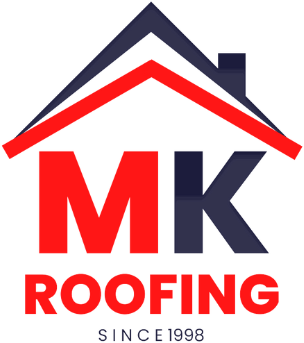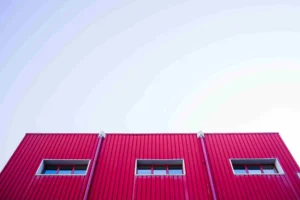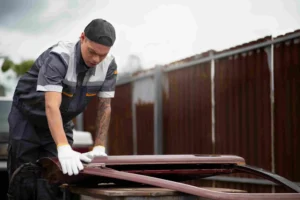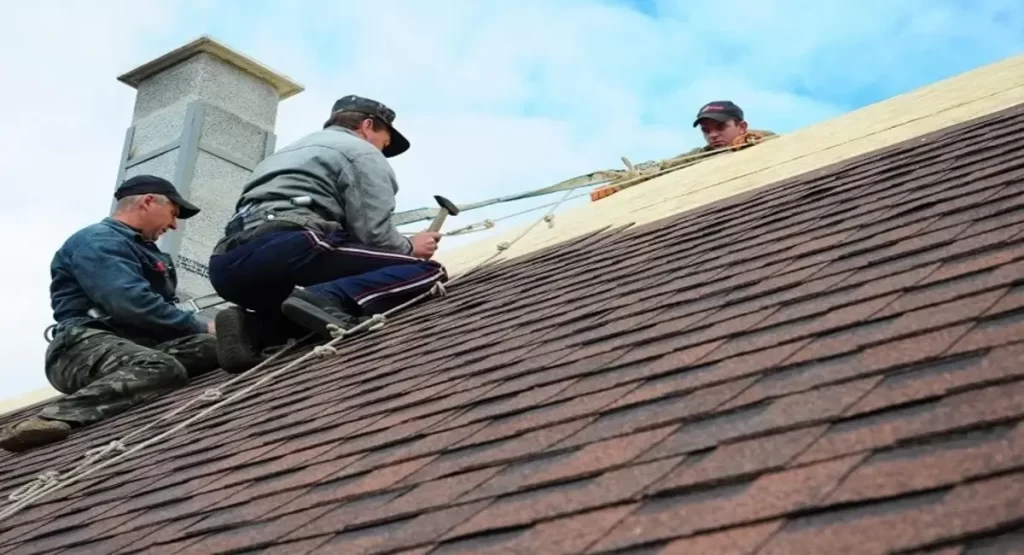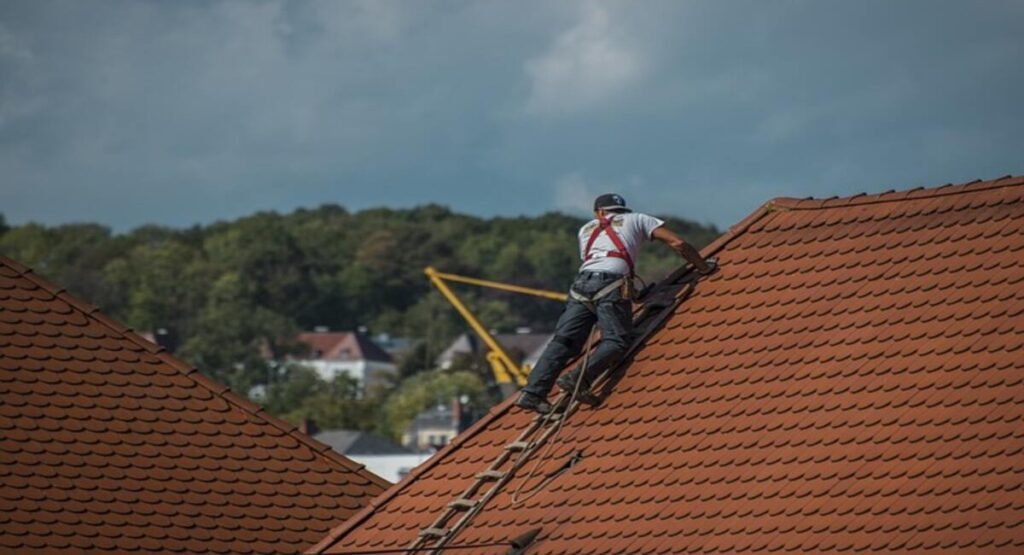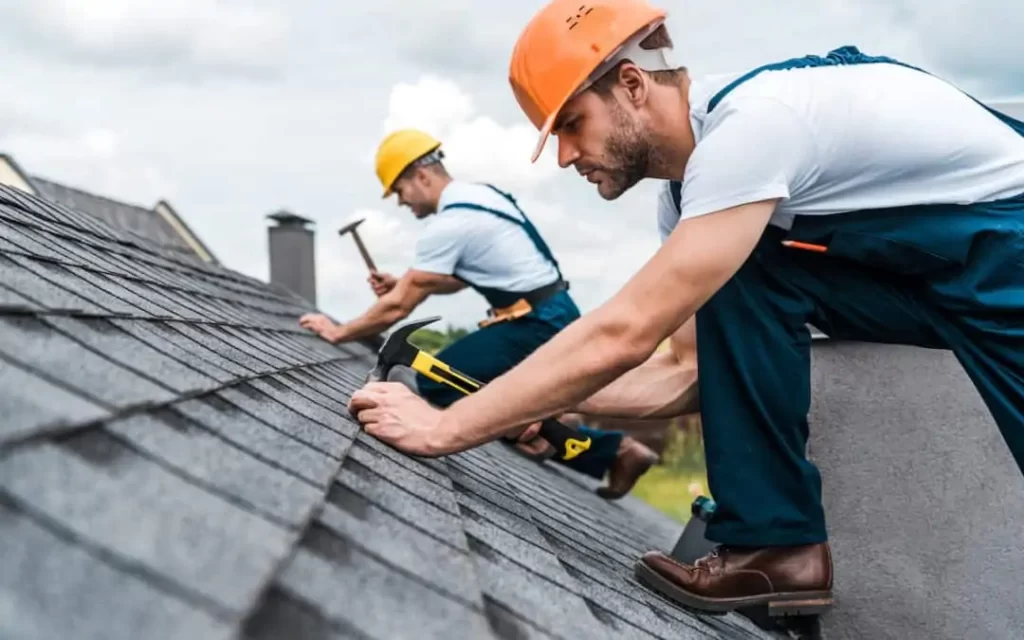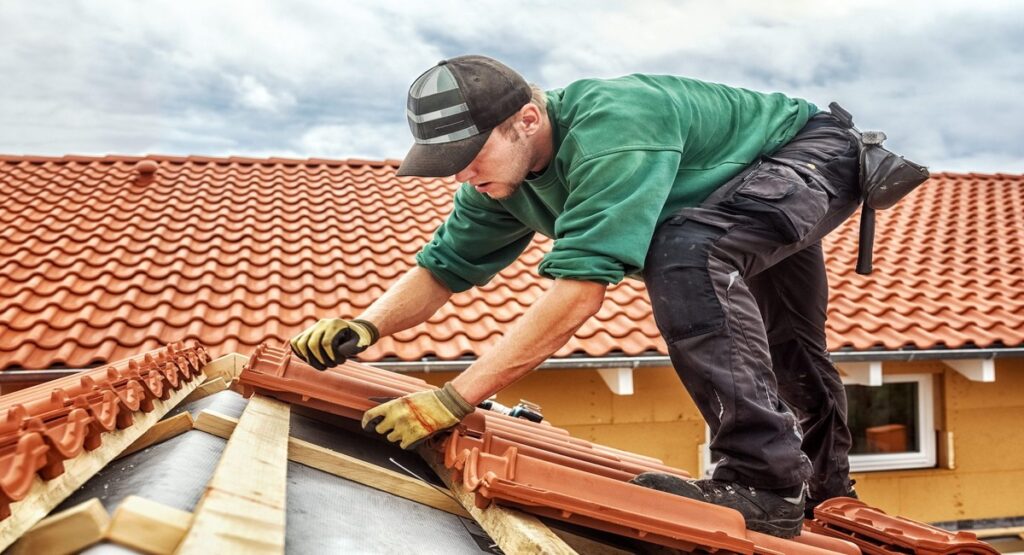Western Red Cedar and Alaskan Yellow Cedar are excellent materials used for cedar roofing. One of the most outstanding features these materials have is that they are natural insulators making cedar roofs great for energy efficiency and heat retention. Due to the wood air pockets, there is a slow heat transfer which allows buildings to maintain stable indoor temperatures. In order to increase energy saving qualities, cedar is treated with fire-retardants as well as preservatives. With that being said, cedar is not the best option in warmer climates since peak summer heat could be overbearing. Let’s explore the pros and cons of cedar roofing to understand how well it retains heat.
What Is Cedar Roofing?
Cedar roofing utilizes cedar wood shakes or shingles as the primary material for a roofing system on buildings. Cedar or wood is a well-known roofing option owing to its unsurpassed natural beauty and durability as well as its stress-free application in various climates. Cedar shakes are split wood and are much thicker compared to shingles which are sawn, and therefore, much thinner.
Cedar shakes and shingles are also known to retain natural oils that help prevent rot and infestation which may otherwise ruin the roofing system while prolonging its lifespan. Due to its resilient design, cedar roofing has been the material of choice for many building owners who want an attractive yet functional roofing system.
Advantages of Cedar Roofing in Heat Retention
When it comes to heat retention, cedar roofing possesses some specific benefits that would improve your home’s overall energy efficiency and comfort. Let’s look at these benefits in depth.
Thermal Insulation Properties
The thermal insulation properties of cedar roofing are noteworthy, as they assist in maintaining an even temperature indoors, as heat transfer is significantly decreased. The natural density and thickness of cedar minimize heat loss in the winter and limit heat entry in the summer. Also, the small bubbles of air present in cedarwood help in limiting air movement and enhancing the insulation properties of the material. Such a natural thermal barrier results in a more desirable environment for people living in the area while also reducing the reliance on heating or cooling systems, thus saving on energy expenses throughout the year.
Energy Efficiency Benefits
Due to the strong insulating characteristics of cedar, there are large reductions in utility bills. Cedar plays a crucial role in keeping the house warm during winter while cool during the summer heat. The maintenance expenditures of HVAC systems are greatly decreased because there is no need for excessive indoor cooling or heating, thus, increasing the effectiveness and lifespan of those systems. This energy saving element is what makes cedar roofing systems an energy-efficient solution for homeowners while being eco-friendly as well.
Longevity and Durability
Cedar roofs are known to last long and are well fitted for different weather conditions, including strong winds and storms. Cedar’s natural oils protect it from moisture, decay, and insect infestations making it better than other roofing materials for a long time. They are also able to break strong winds and heavy rain. Regular maintenance can help increase the lifespan of the cedar roof as it would eliminate the need for regular replacements.
UV Protection and Heat Reflection
Cedar roofing provides good insulation and is also solar resistant as the oil present in cedar wood prevents damage from UV rays. Due to this the roofs can minimize the amount of energy that is absorbed by them, keeping the interiors cooler during the hot summer months. These features add comfort to the user as well as increasing the longevity of the roof by preventing sun damage.
Environmental Considerations
Regarding environmental consideration cedar roofing is environmentally friendly because it is sustainable and biodegradable. Being harvested from renewable resources, cedar wood supports the ecological balance when it is sourced responsibly. Unlike the synthetic products, cedar material breaks down naturally and therefore does not contribute to landfill waste. For these reasons, cedar roofing is eco-friendly for homeowners who are conscious of the environment and are willing to reduce carbon footprint.
Disadvantages of Cedar Roofing in Heat Retention
While cedar roofing has its pros like insulation as well as being aesthetically pleasing, however, there are some major cons when it comes to heat retention that cannot be overlooked.
Potential for Overheating in Warm Climates
Solar heat retention can be a big problem in warm regions when it comes to cedar roofing as it has a very high tendency to retain heat. While cedar provides excellent insulation against the cold, it becomes less efficient in hot environments.
Intense sun exposure to outdoor conditions in hot climates cause cedar shakes and shingles to absorb heat. This heat is passed over to the indoor environment which makes it rather uncomfortable for the people living in the house.
Compared to metals and specific types of asphalt shingles, cedar roofing lacks high solar reflectance which makes it retain heat instead of deflecting it. So, for warm regions with excessive sun exposure and heat, cedar shingles and shakes are not ideal, but this type of roofing could prove to be valuable in colder regions by increasing the temperatures with that heat retention.
Maintenance Requirements
Cedar roofs are more functional and effective only if they are well-kept. Cleaning should be done on a regular basis to prevent the lichen, moss, dirt, and debris buildup as they may trap excessive heat that will affect the overall working of the roof.
Preventative treatments are applied on cedar roofs to prevent them from rot, insect, or other forms of decay, but even these materials may heat up the roof, preventing its excellent insulation properties from being utilized.
And as time passes by, excessive heat may expose the cedar roofs to crack, warp, and even split, therefore losing several of the insulation properties they possess. Maintenance will be paramount to ensure seamless functionality and longevity of the cedar wood roofs and that is only possible through regular prompt repairs.
Cost Implications
The costs associated with cedar roofing are high mainly due to the increased price of materials and skilled labor required which only in turn increases the total cost. During the summer and the hotter months, the energy bills get even higher, and homeowners have to rely on cooling systems more and more due to the cedar’s high retention properties.
While it is true that cedar roofing materials are robust, the maintenance, treatments, and the increase in energy bills in the long-term can accumulate quite a hefty bill. When understanding if cedar is a cost-effective option or not, the location must be used as a major deciding factor as hot regions will not make it cost effective for homeowners.
Conclusion
Now as we approach the end of the blog, you understand why cedar roofing is still a popular roofing choice. However, the heat retention aspects of the cedar do pose some issues in warmer climates especially. The potential for overheating, along with the need for regular upkeep and the financial aspects, are crucial considerations for homeowners.
Homeowners have to analyze if the disadvantages outweigh the benefits in order to understand if cedar would be a suitable roofing material according to their region’s weather and their preference. It is wise to get in touch with roofing specialists who can give their recommendations to make an informed decision.
FAQs
Does cedar roofing provide good insulation?
Yes, cedar roofing is known for its natural insulating properties. These characteristics permit cedar roofing to serve as an effective insulation barrier against external weather conditions. This can lead to less reliance on electric heating and cooling systems which is able to help with energy efficiency.
How does cedar roofing compare to other roofing materials in terms of heat retention?
Cedar roofing performs better in terms of heat retention compared to many other roofing materials. Its natural wood fibers trap air effectively, providing excellent thermal insulation. This characteristic can help increase your home’s energy efficiency and reduce heating costs during colder months.
Is cedar roofing durable enough for areas with extreme weather conditions?
Yes! Wind, snow, rain, and harsh weather, in general, can be easily handled by cedar roofing as it has proven to be quite sturdy. In addition, regular maintenance is needed to prolong its life and enhance the performance. Moreover, treatments can provide resistance to weather-related deterioration.
Can cedar roofing improve my home’s energy efficiency?
Indeed, utilizing cedar roofing improves energy efficiency because of the insulation properties, which aids in stabilizing the indoor temperatures. As a result, during winters less energy is used for heating up the house and similarly less air conditioner for cooling the house during the summer season, which means reduced utility bills.
